Thermal Shock Temperature Cycle
Thermal Shock
Thermal shock testing of electronic components is a high-reliability test commonly implemented in defence, aerospace, automotive and industrial sectors such as oil and gas where extreme temperature variation is likely. The purpose of thermal shock testing is to remove fatigue early life failures from a component batch which would otherwise present over time and under temperature variation in the application. The Coffin-Manson equation determines the failure acceleration rate applied in thermal shock testing.
The common industry practice for thermal shock testing is to physically move the component vertically between two widely differing temperature zones within seconds. During the movement, sensors monitor both the environmental conditions of each zone and also the sample temperature and its recovery time. A specific number of cycles is applied, starting at ambient temperature then to an extreme low (or high) temperature and, within a short period of time, exposed to an extreme high (or low) temperature, before returning back to ambient temperature.
We follow a globally recognised high-reliability test procedure for thermal shock which is called out by methods described in military standards MIL-STD-883K and MIL-STD-202H. Our air-to-air thermal test chamber is specifically designed to perform all tests required by these two standard and achieves a rapid rate of change in the air temperature due to the elevator mechanism employed.
See below operational compliance to MIL-STD-883 and MIL-STD-202.
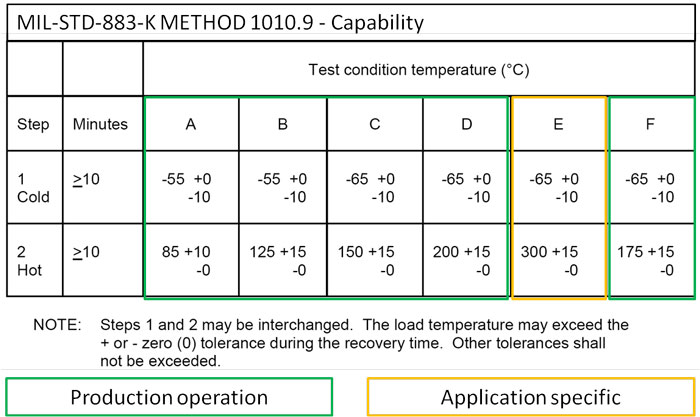
Component samples we test against Mil-STD-883 Method 1010.9 are commonly but not exclusively limited to Semiconductors ICs, Discrete devices, Thick and Thin-film hybrid circuits, Multi-Chip-Modules (MCM), Multi-Chip-Packages (MCP) and any material piece part from which all the latter are formed.
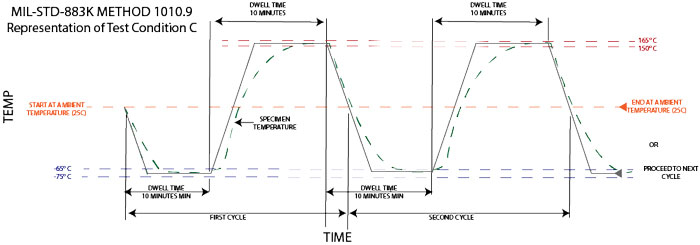
Component samples we test against Mil-STD-202 Method 107 are commonly but not exclusively limited to capacitors, resistors, switches, relays, transformers, inductors, and similar.
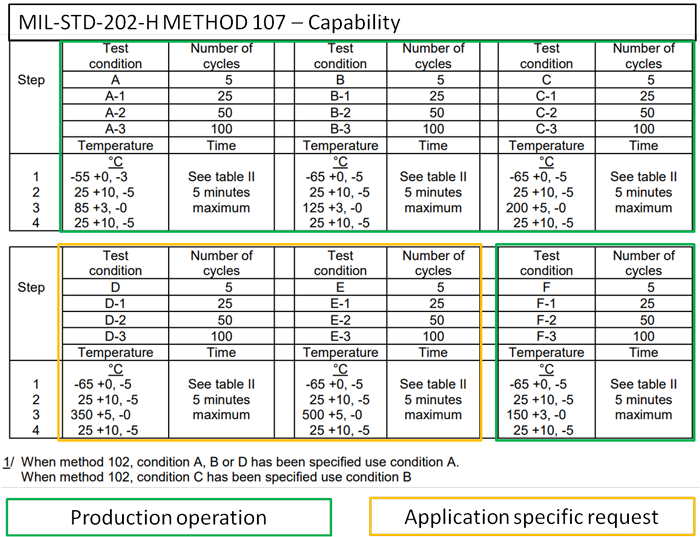
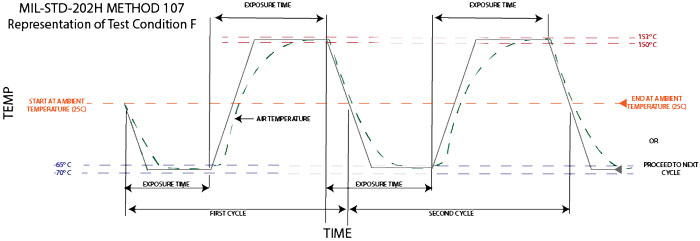
After the test cycle has finished, component casing including leads and seals and also marking is visually inspected. Where any evidence of mechanical component damage or illegibility of marking may be considered a fail.
After thermal shock components are electrically tested in order to ascertain if the stress applied by thermal shock has induced failure or parametric drift.
Thermal Cycling
Versus thermal shock temperature cycle testing uses slower rates of change between high and low temperatures and is intended to qualify if a component can withstand temperature variation over a longer period of time and longer cycles. The objective is the same as thermal shock, which is to weed out early life fatigue failures.
Each test flow will run for a specific number of cycles and temperature variation and similar to thermal shock, post-cycling the components are visually evaluated and then electrically tested.
Typical failure modes of thermal shock and thermal cycling
Primary factors are:
a) the range in between the two temperature extremes high and low temperatures used
b) the time changing between the two temperates
c) the time soaked in the extreme temperature.
Failure modes observed by temperature cycling may include die cracking, package cracking, neck/heel/wire breaks or wire bond lifting.
For reliability testing or qualification of new devices, 1000 temp cycles are usually performed, with interim visual inspection and electrical test read points at 200X and 500X.
Sales & Support
Mechanical Testing
We offer a comprehensive selection of mechanical tests, from ball shear, die shear, wire bond pull to SEM inspection.
Electrical Test
Semiconductor testing to Mil-PRF-38534 Class H & Class K.
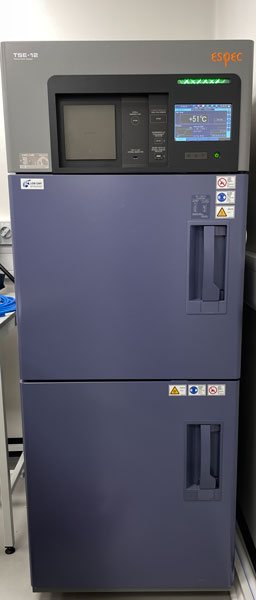
Thermal Cycle Machine
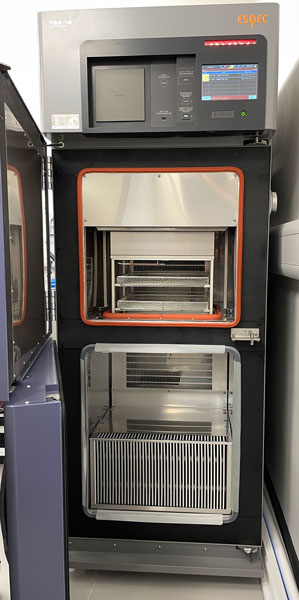
JESD22-A104D, Temperature Cycling
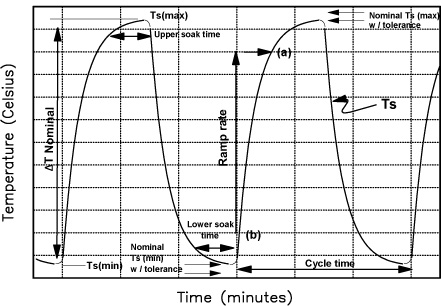
JESD22-A104 Temperature Cycling
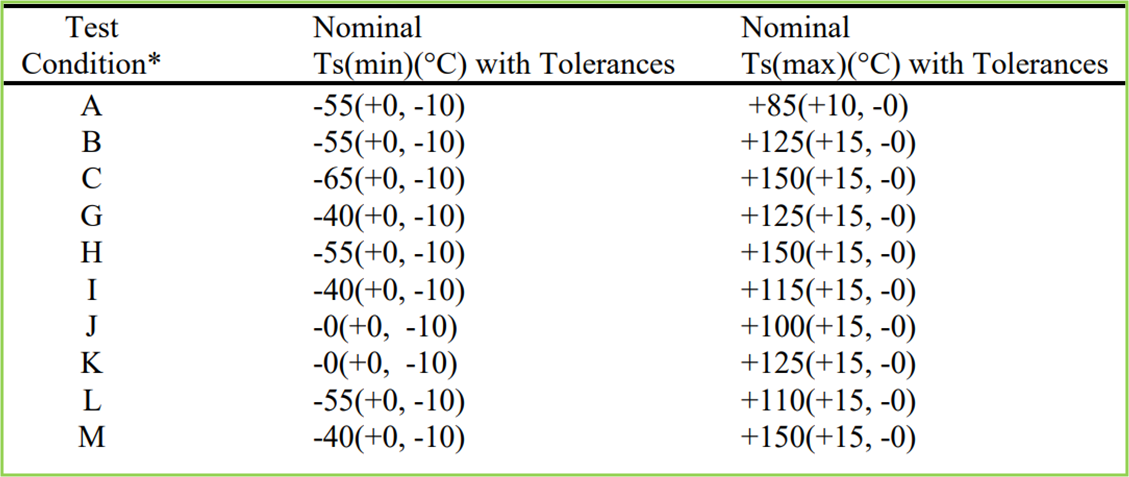
We also perform temperature cycling to other industry standards such as IEC 61300-2-47, JEDEC JESD47E and more….
Learn more about electrical component testing after thermal shock and thermal cycling.
